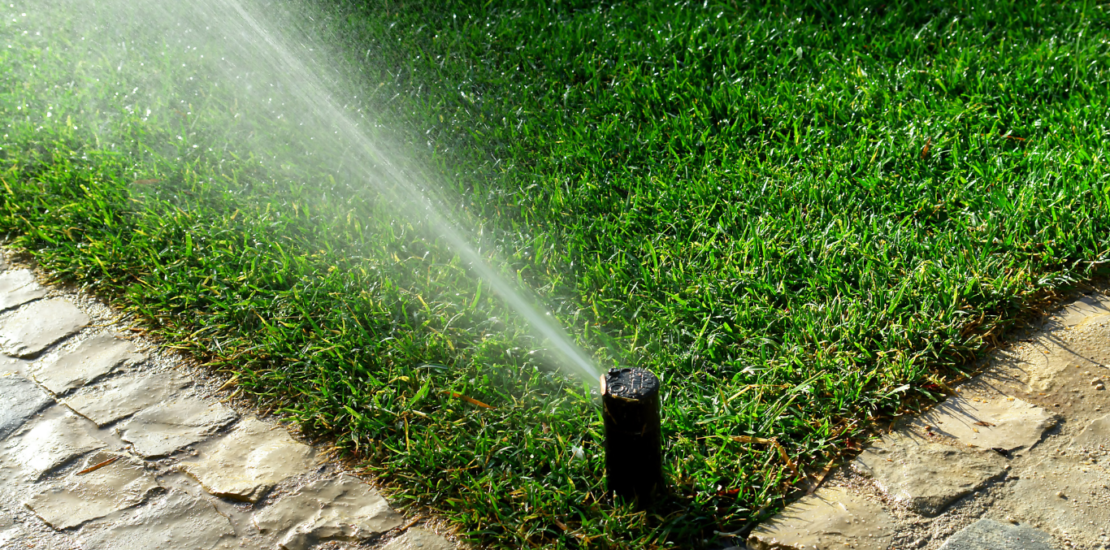- October 10, 2024
- Posted by: Justin Pauling
- Category: Uncategorized

In Arizona’s desert climate, water conservation is crucial for maintaining healthy landscapes without wasting precious resources. Efficient irrigation can keep your plants thriving while significantly reducing water consumption. Here’s how you can adjust your irrigation system to optimize water use in the arid conditions of Arizona.
1. Adjust Watering Schedules Seasonally
Arizona’s climate varies between hot summers and mild winters, meaning your landscape’s water needs change throughout the year. To conserve water and keep your plants healthy:
- Adjust your irrigation schedule four times a year based on seasonal weather conditions.
- In summer, plants need more frequent watering, but in fall and winter, reduce watering frequency to avoid overwatering.
Local Arizona guidelines, like those in Flagstaff, AZ often recommend specific days and times for watering. Following these local mandates ensures your landscape thrives without wasting water.
2. Install High-Efficiency Sprinkler Nozzles
Traditional sprinkler nozzles can waste a significant amount of water due to misting and overspray. Switching to high-efficiency nozzles can reduce water usage by delivering larger droplets and minimizing evaporation. These nozzles:
- Lower the precipitation rate, helping the water absorb more effectively into the soil.
- Prevent wind from carrying away the water, ensuring it reaches your plants’ roots.
3. Water at the Right Time
To make the most of your irrigation efforts, always water during the coolest part of the day:
- Water early in the morning (around 3:00 AM to 6:00 AM) to reduce evaporation caused by Arizona’s intense sunlight.
- Avoid watering in the heat of the day when much of the water will evaporate before reaching the soil.
By scheduling irrigation early, the water has time to soak into the ground and penetrate deep into the root zones.
4. Practice the “Cycle and Soak” Method
If you’re watering for long periods, much of the water may run off before it has a chance to absorb into the soil. Instead of watering for 20 minutes straight:
Break the watering time into cycles—water for 10 minutes, wait 30 minutes, then water again. This method allows the water to soak into the soil between cycles, reducing waste.
For sloped areas, where runoff can be a problem, split watering into multiple shorter cycles to give the soil time to absorb water.
5. Consider Drip Irrigation for Plants
Drip irrigation systems are an excellent choice for Arizona landscapes. These systems deliver water directly to the plant’s roots, significantly reducing water waste. Benefits include:
- Increased efficiency—less water evaporates compared to traditional sprinklers.
- Healthier plants—consistent moisture levels at the root zone promote healthy growth.
This method is ideal for areas with trees, shrubs, and flower beds, as it prevents water from being wasted on unplanted areas.
6. Adjust Sprinkler Speeds and Eliminate Overspray
Overspray, where water lands outside of your lawn or garden, is a common issue with inefficient irrigation systems. To save water:
- Minimize the flow rate of your sprinklers to reduce misting.
- Adjust sprinkler heads to avoid watering driveways, sidewalks, and other non-landscaped areas.
By fine-tuning your system, you ensure that every drop of water goes where it’s needed, reducing water waste and keeping your plants hydrated.
Consider image
7. Check for Leaks and Inspect Your System Regularly
Even minor leaks in your irrigation system can lead to significant water waste over time. Regularly inspecting your system for leaks or broken heads will help you:
- Check for signs of wet spots in your landscape.
- Inspect your water meter for any unexpected increases, which can indicate a hidden leak.
Regular maintenance ensures your system operates efficiently and prevents water waste.
8. Use Mulch to Retain Moisture
Applying a thick layer of mulch around your plants helps reduce water evaporation and keeps the soil cool. This technique:
- Helps the soil retain moisture for longer periods.
- Reduces the frequency of watering, especially during the summer months.
Mulching is an easy and affordable way to conserve water while promoting healthy plant growth.
Consider image
Optimize Your Irrigation for a Sustainable Arizona Landscape
Adjusting your irrigation system is essential for effective water conservation in Arizona’s arid climate. By implementing these strategies—seasonally adjusting watering schedules, installing high-efficiency nozzles, utilizing drip irrigation, and regularly inspecting your system for leaks—you can ensure your landscape remains vibrant and healthy while minimizing water waste. Remember, even small changes in your irrigation practices can lead to significant savings and a more sustainable landscape. By embracing these water-saving techniques, you contribute not only to the beauty of your outdoor space but also to the preservation of our precious water resources for future generations.
